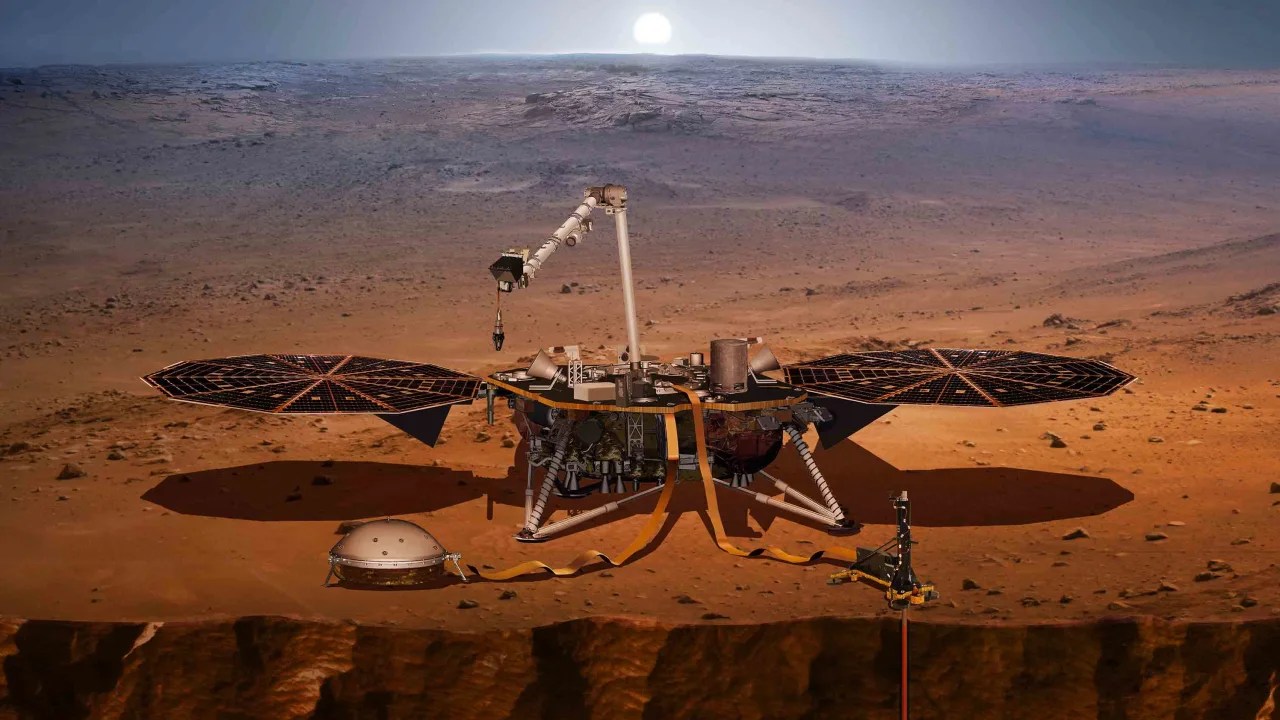(CNN) — Mars is spinning faster than ever, according to data collected on the red planet by NASA’s Inside lander.
The now-retired InSight is equipped with a suite of instruments including antennas and a radio transponder called RISE (Internal System and Rotation Experiment). The instruments were used to monitor the rotation of Mars during its first 900 days.
Astronomers determined that Mars’ rotation is increasing by 4 milliseconds per year. A day on Mars is about 40 minutes longer than a day on Earth.
The increase in acceleration seems unlikely, and researchers aren’t sure what causes it. However, they suggest that this could be due to the accumulation of ice at the Martian poles or the increase in land cover after being covered by snow. When a planet’s mass changes in this way, it causes the planet’s spin speed.
On April 24, 2022, InSight took one last shot Selfies In it he showed off his dusty solar panels. Credit: NASA/JPL-Caltech
The findings are based on an analysis of InSight data shared before the mission lost power and was retired, according to a study published in June in the academic journal Nature.
The INSIDE mission, the first to explore the interior of Mars, was originally expected to last about two years after landing in November 2018. But NASA extended the mission for another two years.
In December 2022, the InSight mission continued to collect data on Mars until after dust blocked its solar panels and stopped receiving sunlight.
InSight benefited from advances in radio technology carried over by the Viking landers in the 1970s and Pathfinder in the 1990s. Deep Space Network, Or large antennas located at three strategic points on Earth transmit information from space missions and improve the accuracy of data captured by InSight and sent back to Earth.
Scientists used the Deep Space Network to transmit signals to RISE on InSight, which reflected the signal back to Earth. These relayed signals enabled researchers to detect small changes in frequency caused by the Doppler shift, which causes sirens to change pitch based on their distance. Frequency changes are related to the rotation of the planet.
“What we’re looking for is variations of a few tens of centimeters over a Martian year,” explains the study’s lead author, RISE Principal Investigator Sébastien Le Maistre of the Royal Observatory of Belgium. “It takes a long time and a lot of data to accumulate before we see these variations.”
Measure the wobble of Mars
Previous research, made possible by the mission’s unique detection of the planet’s interior, confirmed the presence of a molten metal core on Mars. Researchers used RISE to measure the tremors of Mars’ inner core.
Tracking Mars’ wobble, or nutation, allowed the team to measure the size of the core.
The RISE data suggest that the core is about 1,835 kilometers in radius.
The new figure was compared to previous estimates of the epicenter radius obtained by tracking seismic waves as they travel through the Martian interior. Combining these measurements, the researchers estimated that the core of Mars has a radius of 1,790 to 1,850 kilometers.
Although InSight is no longer operational, its data collected over four years on the surface of Mars has changed the way scientists understand the Red Planet. The mission was the first to reveal some of the secrets of the Martian interior, and scientists will spend decades analyzing their data.
Bruce Bannert, who served as InSight’s principal investigator before retiring on Aug. 1, said in a statement that “it’s great to have this latest measurement, and one that is so precise.” He worked for 46 years at NASA’s Jet Propulsion Laboratory in Pasadena, California.
“I’ve been working on getting a geophysical station like InSight on Mars for a long time, and results like this make those decades of work worthwhile.”





